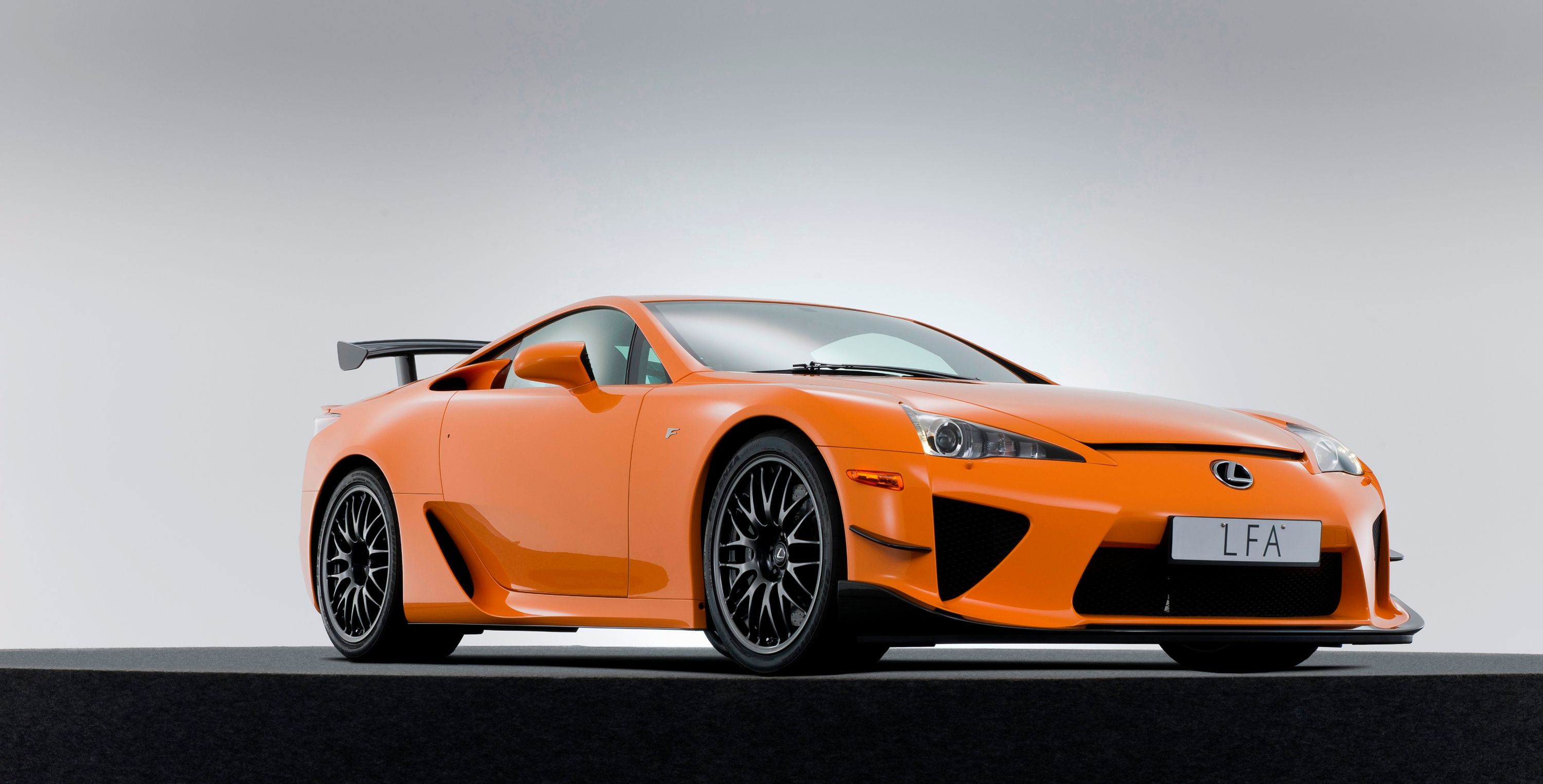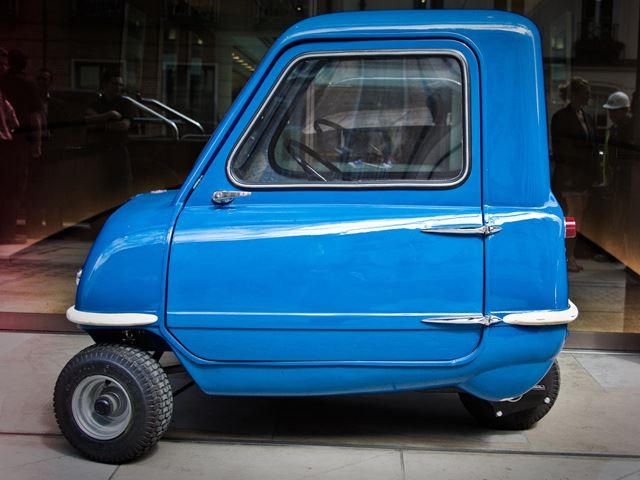
We've been reluctant to cover the Peel P50 in any capacity up until now. With just about 50 units originally produced and a design that was an evolutionary dead-end, the car wasn't really significant in any real way. To cover it would therefore have been cheap and shameless Top Gear bandwagon-hopping, but when talking about three-wheeled vehicles, this smallest production car ever made is indeed relevant, as well as hilarious. The Peel Engineering Company was started on the Isle of Man with the initial purpose of making fiberglass boats.
The P50 was the company's first production vehicle, and joins two other Peel models as the only automobiles ever produced on the Isle of Man. The other two are the Trident, a sort of sport version of the P50, and the Viking Sport, an actual car with four wheels that nonetheless never really took off. The Viking Sport has dimensions similar to the original Mini, therefore making it a giant next to the P50. But only around 20 of these were ever built. As you can probably guess just from looking at it, the idea behind the P50 was to build the very smallest car possible, and to this day, the P50 remains the record holder for just that reason.
It has a wheelbase of 50 inches and an overall length of 53.9 inches, a width of 39 inches and at 39.4 inches tall, it's just a bit shorter than the famously low-slung Ford GT40. You will also obviously expect such a car to be light, but at just 130 lbs, the P50 still might surprise you with its lightness. Its maker advertised it as being able to carry one adult and a bag (yes "a" bag, singular) of groceries. The car was designed and even shown to the public before an engine was decided on for use in it. The word "engine" might be a slightly grandiose term for the 49cc DKW-sourced unit that was eventually used.
This produced 4.2 horsepower, but with the extreme lightness of the vehicle, was still enough to get it up to 38 mph. The idea of getting up to such a speed in a vehicle so tiny might sound a bit terrifying, especially on roads with other cars, but by all accounts, the P50 was about as stable as any three wheeler can be. And like the early examples of the Isetta, the P50 had no reverse gear. This was less annoying than in other three-wheelers, as its light weight and carrying handle mounted in the back made it easy to move around by hand. The P50 sold for about $300 when new, but its rarity and rather unique nature have made it a surprisingly valuable collector's car today.
In February, an original P50 went at auction for $120,000, and even a replica can run you upwards of $20,000. But since 2011, a new company has been set up in the UK (and not the Isle of Man) which also bears the name Peel Engineering Company. This has no direct links to the original company, which folded in 1974, but it is still producing replicas of the P50 and Trident for around $12,000 apiece. The top speed is now up to 40 mph (although limited to 25 unless the customer requests that it be increased), but the new car can beat the old machine's impressive 80 mpg with a return of 118 mpg.
There is even an option for an electric version with roughly similar performance figures and a range of about 20 miles, probably the absolute longest you'd want to be sitting in such a car anyway. The P50 might not have been the most dignified way to travel, and it's not really a huge surprise that it never caught on. But you still have to appreciate the effort made to push something to the absolute extreme, even if it is an extreme of smallness.

